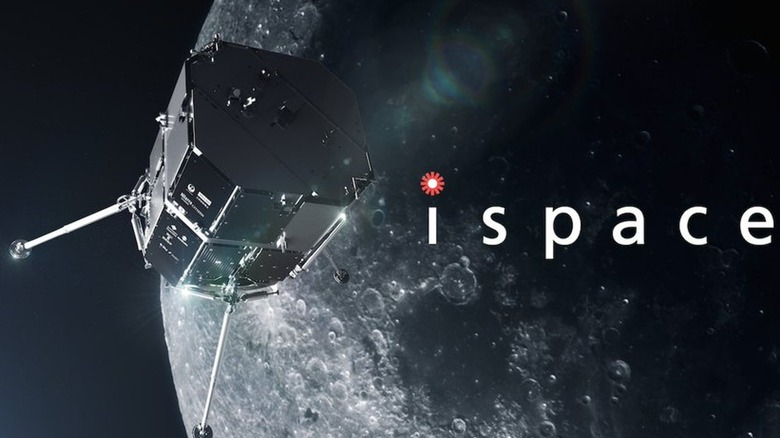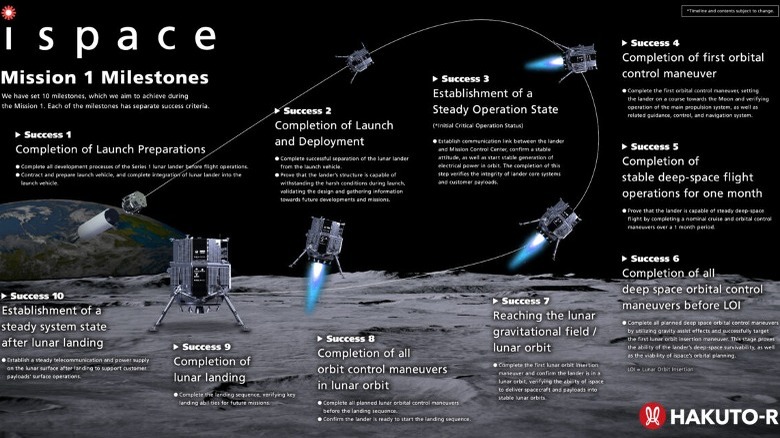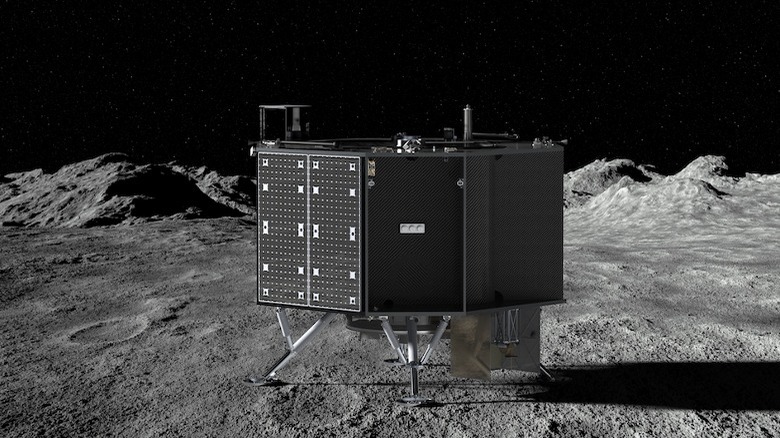Japan's Ispace Gives Official Status Update On Failed Moon Landing Mission
Shortly after ispace's lander was due to make history as the first private, commercial vessel to touch down on the Moon, the outlet released a status update on the failed mission. ispace reported on April 26, 2023, that communication between the lander and the Mission Control Center in Nihonbashi, Tokyo, was lost, and an analysis of the propellant levels onboard indicates that a rapid descent toward and collision with the Moon's surface is the likely cause of this lost connection.
"It has been determined that there is a high probability that the lander eventually made a hard landing on the Moon's surface," the status update reads. The outlet notes that additional inspection is needed to understand the cause of this malfunction, and future reports will follow with more relevant details.
The Hakuto-R lander was rocketed into space on December 1, 2022, aboard SpaceX's Falcon 9. It was set to touch down on the Moon's surface at roughly 1:40 am JST on April 26, 2023. Upon successful landing, the craft was intended to release a rover called Rashid, built by the United Arab Emirates space agency, another first for lunar exploration.
Success 9 is no longer achievable
This means that ispace's first mission has been scrapped and cannot be completed, failing at its ninth step (which ispace calls "successes"). "Successfully landing on the Moon and establishing communications is no longer achievable," according to the company's update.
The ninth milestone would have nearly completed the mission plan set forth by the team, with the tenth and final success milestone representing a steady state of the lander module after touching down on the Moon. Even with the failure to make a soft landing on the surface, ispace is undeterred by the result. "Although we do not expect to complete the lunar landing at this time, we believe that we have fully accomplished the significance of this mission, having acquired a great deal of data and experience."
Of course, each phase of a launch into space requires highly technical capabilities and immense precision, so achieving 80% of the mission success milestones in the first attempt is nothing to scoff at. Similarly, the feat becomes even more impressive as a private company rather than a nationally-funded space agency. In addition to continued analysis of conditions that ultimately led to the mission's failure, ispace is already looking ahead to incorporate learned lessons from this endeavor into its second and third missions, currently slated for 2024 and 2025, respectively.
There is substantial cause for optimism, however
This ispace mission is the first of at least three launches aimed at landing on the surface of the Moon. The standard set by this first effort will almost certainly translate into improvements during the following launches. Similarly, ispace's efforts are already interlinked with NASA's Artemis program, which is expected to rely on commercial space travel to bring supplies out of the Earth's atmosphere and supply the combined team with lunar landing vessels and equipment.
Over the long term, ispace aims to build a revolving three- to five-month delivery schedule for lunar payloads that uses the low-energy orbital path. The brand already works with NASA's Commercial Lunar Payload Services program funding. This partnership will likely continue to blossom as NASA's efforts to bring astronauts back to the Moon ramp up, with Artemis III launching as early as 2025.
The optimism expressed by Japan Aerospace Exploration Agency's (JAXA) president Hiroshi Yamakawa permeates the mission update from ispace. "As a fellow Japanese space enthusiast, I am proud of ispace's challenge and respect the efforts of everyone involved... JAXA will continue to make steady progress together with ispace."


